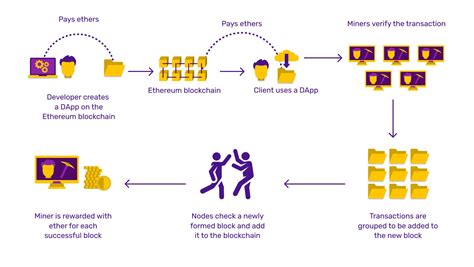Can the Ethereum block chain be overcome by a low -difficulty block chain?
As the world is increasingly depending on blockchain technology for safe, decentralized and transparent transactions, a question that has caused debate among experts is: can the entire blockchain block chain be overcome?
For those who are not familiar with blockchains, let’s break down. A blockchain is a distributed older book that records transactions in a computer network. Each chain block contains a summary of all transactions made from the previous block and creates a new block header containing a unique code (hash) for each transaction.
In Ethereum, the work test algorithm, also known as “Ethash”, is used to ensure the network by demanding miners to solve complex mathematical puzzles. The level of difficulty of these puzzles changes over time due to the number of nodes in the network and the amount of computational power they have available. This makes it increasingly difficult to extract new blocks in a short period.
The scenario of bifurcation
Now, let’s consider an extreme scenario in which someone creates a blockchain fork of the Genesis block (the first block in the Ethereum Network) with extremely low difficulty configurations. They begin to extract new blocks from this point and continue to do so until they reach a certain milestone, say, 10 million transactions or more.
In theory, if these miners could somehow maintain an almost constant block production rate, it would take much less time to achieve the required number of blocks than in normal circumstances. Theoretically, this means that the entire block chain could be “pumped” by a low -difficulty block chain before the safety of the network is compromised.
But can it happen?
Theoretically, yes, but there are several reasons why such an extreme scenario would not lead to a rapid collapse of the Ethereum network:
- Network congestion : The largest number of blocks would exert immense tension in the network, causing congestion and slowing transactions.
- The bottlenecks of the hash rate

: As more nodes try to extract new blocks, the general hash rate (available computational power) decreases, which makes it more difficult to maintain a rhythm of Consistent block production.
- Transaction time
: The necessary time to confirm a transaction would increase significantly due to the greater number of transactions in the tail.
- Intelligent contract interactions : With a greater number of blocks, intelligent contracts can begin to experience delays and errors as they interact with the network.
Conclusion
While it is theoretically possible that a low -difficulty block chain exceeds the Ethereum block chain, there are many practical limitations that make this scenario very unlikely. The rapid growth of the network would probably lead to congestion, bottlenecks of the hash rate, transactions and intelligent contract errors before significant damage could be done.
In conclusion, although it is an intriguing experiment, the idea of a low -difficulty block chain that overcome the Ethereum block chain is more a matter of theoretical possibility than practical reality. For now, the decentralized, safe and transparent nature of the Ethereum Network remains unanswered, thanks to its robust algorithm of consensus of work proof.
References
- “Ethereum 2.0: A technical description” of Vitalik Butein
- “Blockchains in a computer network: a scalable solution for safe financial transactions”
- “The intelligent contract panorama: trends and applications”
Note: This article is intended to provide an informative description of the topic, instead of predicting a specific result or providing technical advice.
